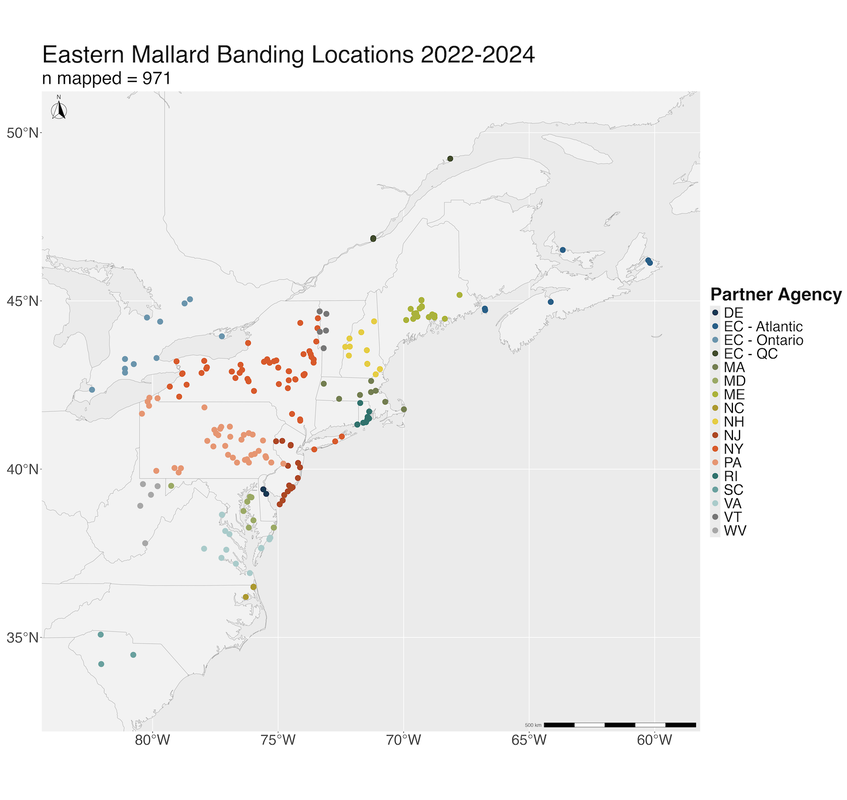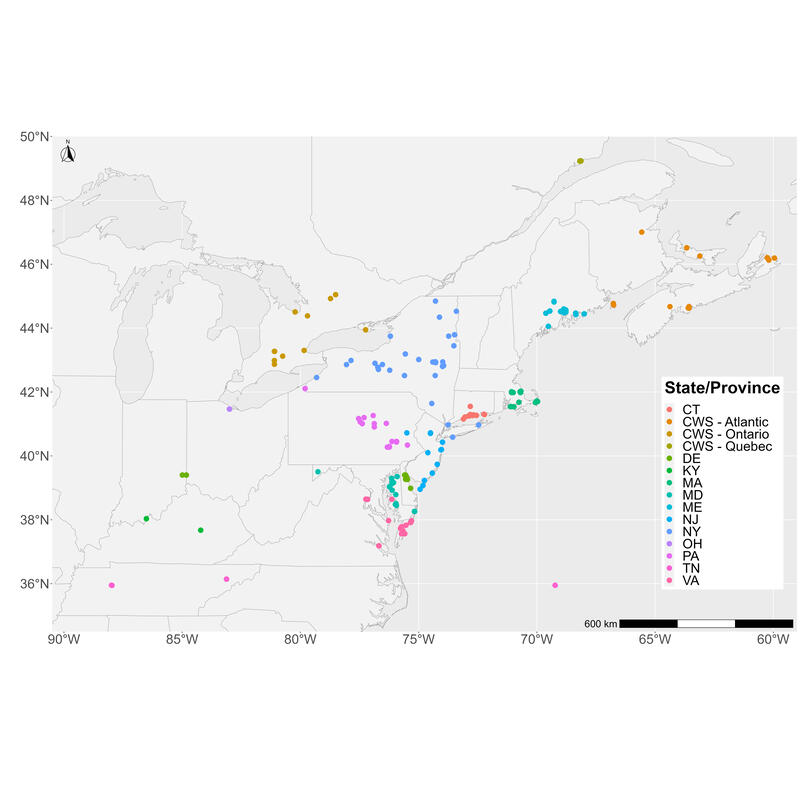971 tracking devices deployed on hen mallards from 2022-2024Map showing the distribution of transmitter deployments on eastern mallards in the Atlantic Flyway.
We aim to deploy >1,100 GPS-ACC devices on hen mallards in the Atlantic Flyway and 700 GPS-ACC devices on hen black ducks in the Atlantic and Mississippi Flyways. Not only will we know where the birds are but we can identify patterns of behaviour like foraging, flying, and incubating a nest. By determining the factors that have the greatest impact on fitness, we can better guide management.
694 tracking devices deployed on hen black ducks from 2021-2024Map showing the distribution of transmitter deployments on black ducks in the Atlantic and Mississippi Flyways.
|
MallardMallards are commonly found at wetlands and urban ponds in the Atlantic Flyway yet there has been a puzzling population level decline of ~1% annually since 1998 particularly impacting breeding mallards in northeastern US. In contrast, in eastern Canada mallard populations are stable. Determining the drivers behind these different trajectories is the impetus for this project. american black duckRecent population modelling suggests breeding success may be limiting population growth of black ducks. Many black ducks breed in the boreal forest of Canada, a vast area that is challenging to access, limiting research on the breeding ecology of black ducks in this area. Using tracking technology, we are at last able to gain information about this previously understudied period of the annual cycle and determine what factors may be limiting breeding success of black ducks. |
Habitat loss and degradation is the greatest threat to waterfowl populations and wildlife at large. Urbanization and climate change are altering landscapes leading to increased drought and flood conditions making it difficult for waterfowl to find food, migrate, and nest. Working in large partnerships to determine conservation needs and suitable pathways forward is imperative to creating beneficial change and effective management of populations.
OUR GOALTo better understand the full annual cycle of mallards and black ducks in eastern North America so state, federal, and non-profits can better manage them |



